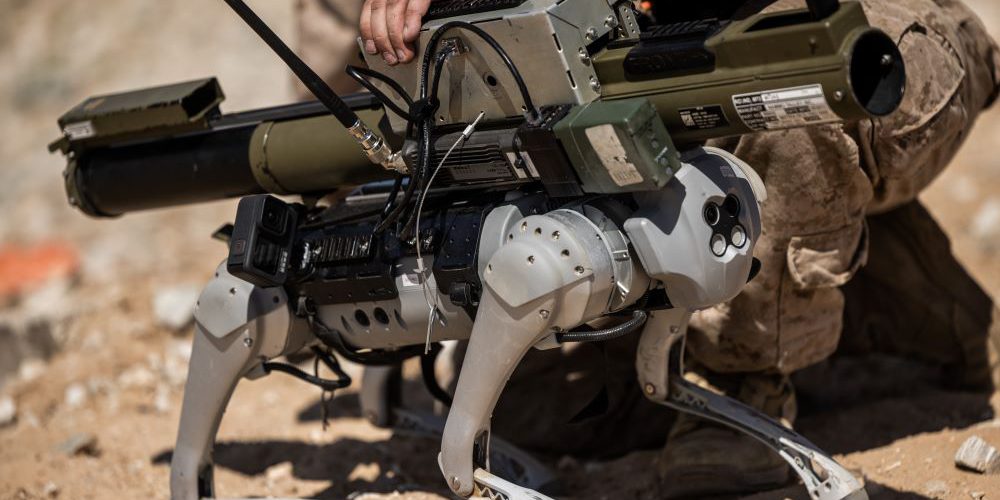MARINE CORPS AIR GROUND COMBAT CENTER, Calif. — Marine Corps Air Ground Combat Center (MCAGCC) has emerged as a critical center for innovation within the United States Marine Corps. The largest Marine Corps training facility of its kind, MCAGCC has become an essential testing ground for emerging technologies.
Marines with Tactical Training and Exercise Control Group, Marine Air Ground Task Force Training Command, MCAGCC, in concert with the Office of Naval Research, tested a quadruped robotic platform referred to as the “robotic goat” on Sept. 9, 2023. TTECG and ONR test fired an M72 light anti-tank weapon rocket launcher from the robotic goat. The robotic goat can carry various sensors or weapon systems that would otherwise be carried by a Marine.


